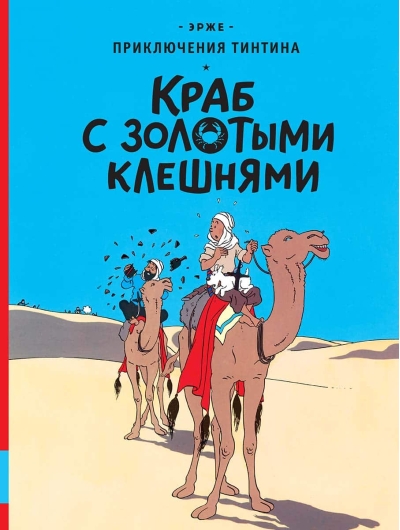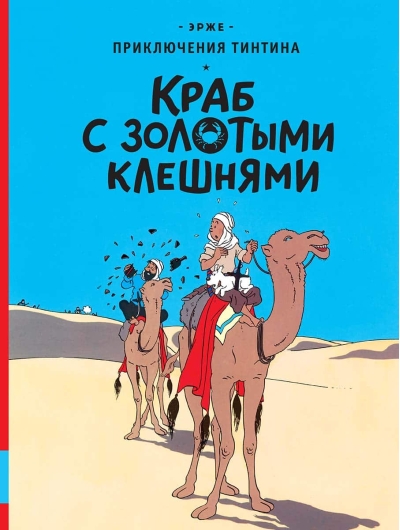Golden Claw Crab
Life throws Tintin a new puzzle. This time his attention is drawn to an empty tin can and a scrap of label with the word "Karabujan" scribbled on it. Soon our hero discovers that this is the name of a dry cargo ship that is preparing to sail. Intrigued, Tintin climbs aboard the ship and... finds himself in the hold, bound hand and foot. Fortunately, Milo manages to chew through the ropes. Freedom! While exploring the ship, which is sailing to an unknown destination, Tintin stumbles upon crates of tinned crab. But much more curious is another thing: the exact same can Milu pulled out of the trash can at the beginning of the story! Tintin decides that it's time for a refreshment: just a moment more and it will become clear what secret hides the yellow label with a big red crab... "The Adventures of Tintin" is a world-famous series of comic books by Belgian artist Georges Remy, who worked under the pseudonym Hergé. Risking his life, the brave reporter Tintin investigates mysterious incidents, but out of all trouble comes out victorious. And no matter what happens, his faithful friend - snow-white foxterrier Milou - is always by his side. Ninth comic book "The Crab with Golden Claws", created by Hergé in 1941, was a turning point for both the series and its author. First, magazine versions of "The Adventures of Tintin" began to be printed not in the children's supplement to the newspaper "XX Century", closed because of the war, but in the main Belgian newspaper Le Soir, first in the weekly youth supplement Soir - Jeunesse, and then in the main edition. Secondly, The Crab was the last volume, the first version of which was published in black and white (thereafter it was only color, immediately). Third, it was in the process of working on this album that publisher Casterman decided to reduce all the albums to the standard volume: 62 comic strips (64 typographical pages). Curiously enough, the decision was dictated not by artistic intent, but by the acute shortage and high cost of paper. The publisher wanted to reduce the price of the album by making it more accessible to the general public (the black and white versions of the albums included more than 100 pages each). This decision forced Hergé to seriously rework all the previous stories, fitting them to the new format. Fourth, the incredible success of the album edition of The Crab convinced everyone - readers, publisher and author alike - that the future of BD (from French bande dessinée) was not in magazine publications, but in albums. And fifth - and finally - and most importantly! - Captain Haddock appeared in the series.
See also:
- All books by the publisher
- All books by the author
- All books in the series The Adventures of Tintin











